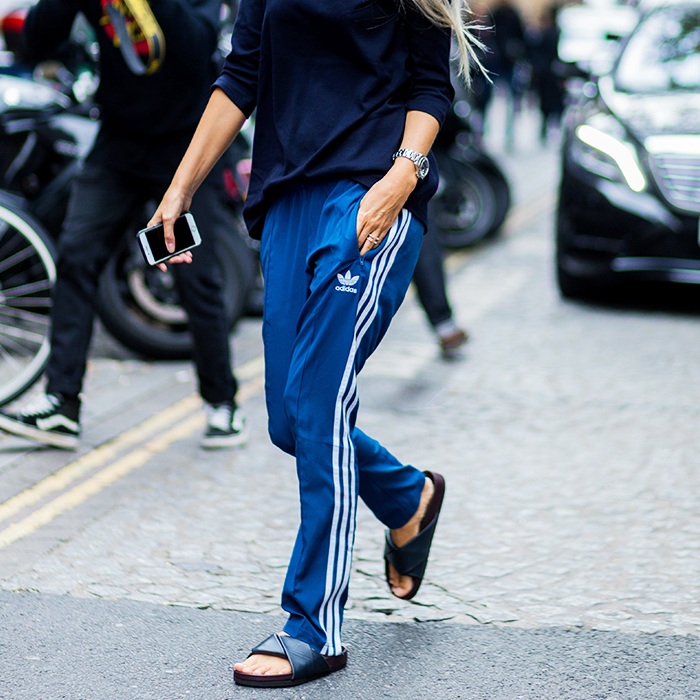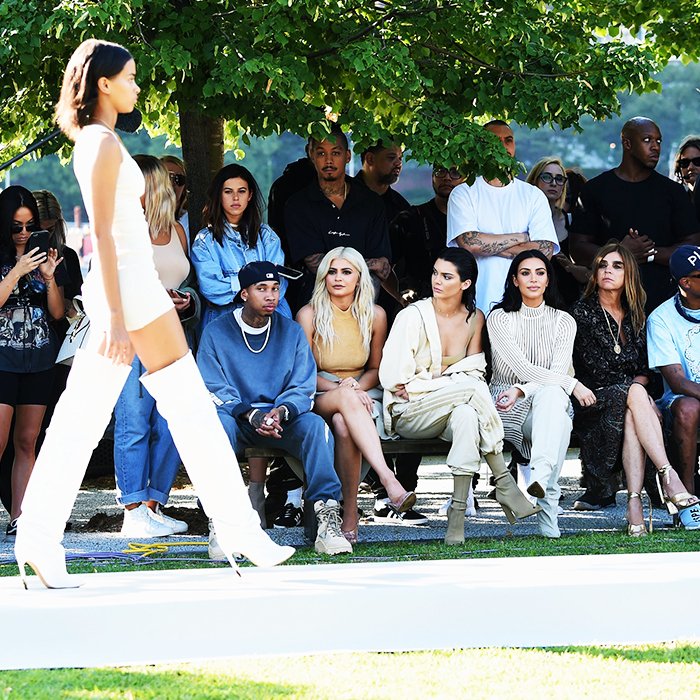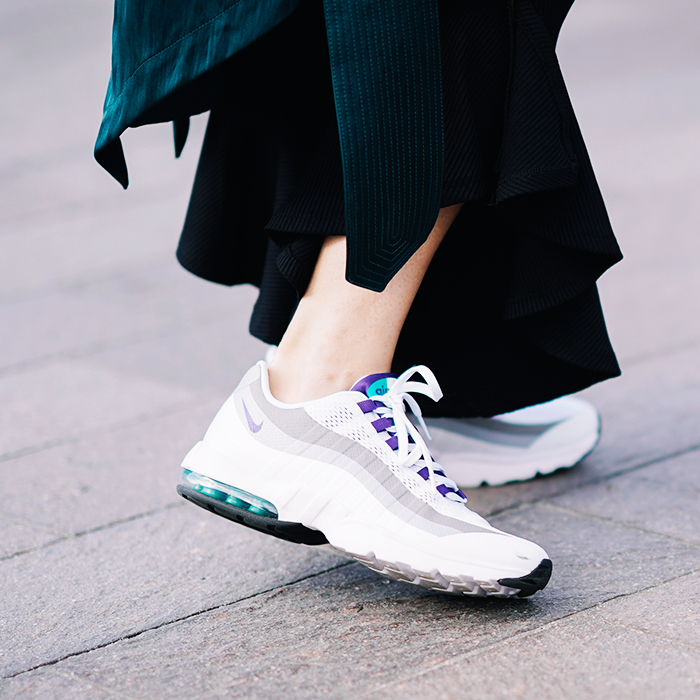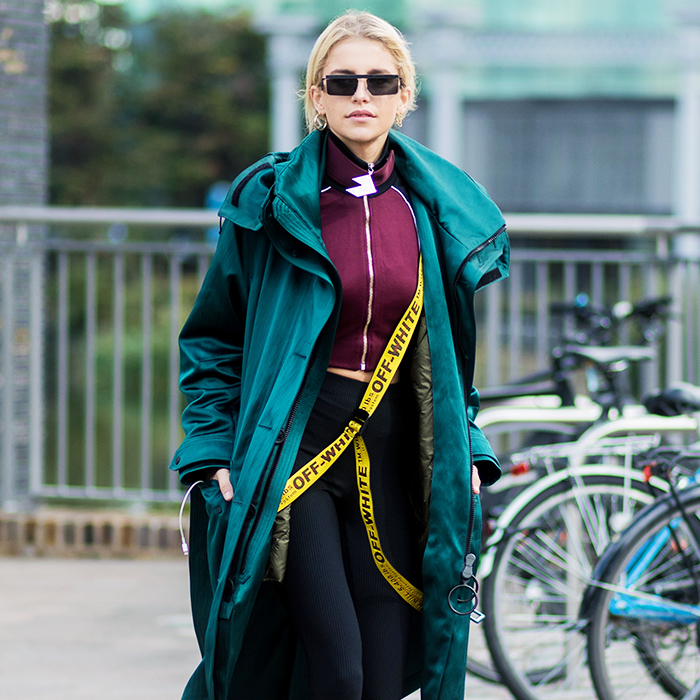The History of Streetwear: From Stüssy to Vetements

Streetwear isn’t a new phenomenon—it has actually been around for nigh on 40 years. However, it's over the past few seasons that the once humble aesthetic has successfully moved into the higher echelons of fashion, establishing itself as a retail force to be reckoned with. From one and all wearing tracksuit bottoms as if they're jeans to celebrities constantly choosing athleisure over all else, it turns out that streetwear is so much more than a trend or phase. Designer brands such as Vetements and Off-White, which riff on these style signatures, have become the hottest property in the industry and show no signs of slowing down.
But how did it turn out that what was once a subversive, subculture movement only followed by surfers and skateboarders now influences the whole of the fashion industry, from the high-street to the luxury market? I'm fascinated how not only our tastes have changed but how one small movement became so big. To really understand the genesis of this seismic shift in how we dress, I spoke to a raft of experts, from streetwear journalists to clothing manufacturers, as well as streetwear designers and buyers. Keep scrolling to find out how one small fashion movement changed the way we dress forever.
Where did it start?

Originally, streetwear was a way to describe comfortable clothing, predominantly worn by people following skateboarding and surf culture in Los Angeles. Shawn Stussy, who made surfboards, also started making T-shirts (with the now iconic logo) and selling them. He is often credited with being the originator of the entire streetwear movement. Without him, the likes of Vetements and Off-White wouldn't exist today as contemporary luxury streetwear brands. But we're getting ahead of ourselves…
I spoke to Matt Nation, who runs ProvideShop.com and has been involved with streetwear brands in the UK and U.S. for almost 15 years, for some history on the phenomenon. "It's really important to acknowledge that streetwear is a byproduct of wider subcultural movements like hip-hop and skateboarding, so what we now call streetwear has been evolving since the 1970s. As all great fashions eventually make their way to the masses, it was bound to have its moment in the spotlight. I'm just surprised it's taken this long!"
The cult of supreme

After California, the look became popular with youth culture scenes, especially within skateboarding and hip-hop circles in New York. But it was brands such as NYC-based Supreme, which started in 1994 as a skateboard and clothing shop, that propelled the trend further. Started by James Jebbia, the label quickly garnered a cult following that has only grown over the years.
Alec Leach, digital fashion editor for High Snobiety, revealed exactly why Supreme has such longevity. "The way they distribute their clothing is key. Supreme's drop, it's actually a lot like belonging to a football club. It's a way for young people to get together." While Supreme releases lookbooks every season, much like every other fashion brand, it's the dedicated Thursday "drops" of products that ensure there's constant talk about the brand. Insane queues are how you're more likely to spot a Supreme store before you even notice the iconic red-and-white logo.
Not only that, but Supreme has also made collaborating with other brands a real art form. From working with smaller indie labels to creating lines with the likes of Nike, A Bathing Ape, Fila, The North Face, A.P.C., the limited-edition ranges always sell out and manage to reach a wider audience. However, it was the collaboration with Louis Vuitton this year that ultimately cemented Supreme's super status.
How it became mainstream

While Supreme can definitely be credited with helping to move the streetwear trend forward, there are other aspects at play. Matt from Provide reckons that a "democratisation of fashion has made it possible for more people to participate in an industry that has historically had high barriers to entry." And he's right. With less emphasis on having to wear certain designer labels and anyone being able to launch their own fashion line, it's meant the traditional gatekeepers no longer dictate the rules.
But Alec at High Snobiety has another theory—we're wearing streetwear because society's dress codes have relaxed. "No one's going out on a Friday wearing a suit," says Alec. "It's not a case of the culture getting so huge. It's that it's become the logical way of dressing. People would much rather wear trainers than shoes. These days, even the likes of PWC have relaxed their dress codes to compete with Silicon Valley. And some Wall Street firms say you only have to wear a suit for client meetings."
The celebrity factor

As always, to make anything go stratospheric, the A-list needs to be involved, and streetwear is no different. From Kanye West and his Yeezy line to Rihanna's Fenty x Puma collections plus various celebrities becoming the faces sportswear brands (Kylie Jenner for Puma, Bella Hadid for Nike, and so on), celebrities have been heavily advocating this sense of style both on and off the runway, as well as on and off duty.
"Streetwear is basically getting indistinguishable from pop culture," says Alec. "It's become such a huge thing it's become the de facto way for celebrities to dress." And as a result, it's become the de facto way for us to dress.
How and what we wear today

If there's one place that can give us some hard data on what people want when it comes to fashion, it'sLyst. The global fashion search platform revealed that people have fervently searched for a number of both expensive and affordable streetwear brands this year—further proof this category is only getting more popular.
In addition to 1000 searches a day for the Vetements x Reebok sports socks, Nike Air Max '97 sneakers continue to be in hot demand as they've been in the top three "most searched for" trainers over the last four months. Meanwhile, searches for Fenty x Puma were at an all-time high over the last month. But surely one of the biggest indicators is that one of the original streetwear labels—Stussy—has increased 11% year on year for search, and they were at their all-time highest in July this year, with hoodies as its best performing category.
Searches are all well and good, but what about actual purchases? I spoke to Designer Studio buyer Sev Halit at Selfridges, who shared a similar story. "We have definitely seen a rise in interest around streetwear brands in recent years. It's not only a big part of today's youth culture, but these brands also now appeal to the wider fashion market."
Rob Williams, who runs one of the biggest clothing manufacturers in the UK, Hawthorn, reiterates this point: "I can definitely attest to the fact that streetwear is becoming more and more popular. Around 70% of the brands we do work with are streetwear brands or have elements of streetwear within their ranges. This is out of around about 105 brands which we are currently working with."
The future of streetwear

Perhaps the biggest question right now is Will this trend last? We all know that fashion is fickle, and it's likely that, at some point, streetwear's popularity might suddenly take a hit. To work out what the future might hold, I spoke to Sofia Prantera of '90s cult brand Silas and now founder of new streetwear label Aries, about where this trend is going.
"I am not sure if the notion of streetwear and street style as we knew it is still valid, I think it has been diluted forever. It used to be about belonging to a subculture, and it is what initially attracted a lot of people to fashion. My generation is still very attached to the concept of anti-fashion, and for this reason, it would be acceptable to predict some form of a streetwear backlash."
Similarly, UK editor Nav Gil of Hypebae says that it's hard to predict where streetwear will go next. "Streetwear has always been of the moment. Will there continue to be a burst of high-end brands producing massive oversized hoodies? Maybe. At the end of the day, fashion has its moments with what they think is cool at the time. Of course, it might get oversaturated and then not cool anymore. It might then go back to the streets and people starting their own small streetwear brands again. And it'll come back around again."
Next up: the biggest autumn/winter 2017 fashion trends you need to know about.

Elinor Block was one of the earliest team members of Who What Wear UK, starting her tenure working across both Who What Wear and Byrdie, which were owned by the original parent company, Clique, at the time. Her specialism in fashion and beauty established her multifaceted role as Assistant Editor, which she developed over six years from 2016 to 2022 to become Deputy Editor. She is now the Head of Editorial at fashion tech company Drest.